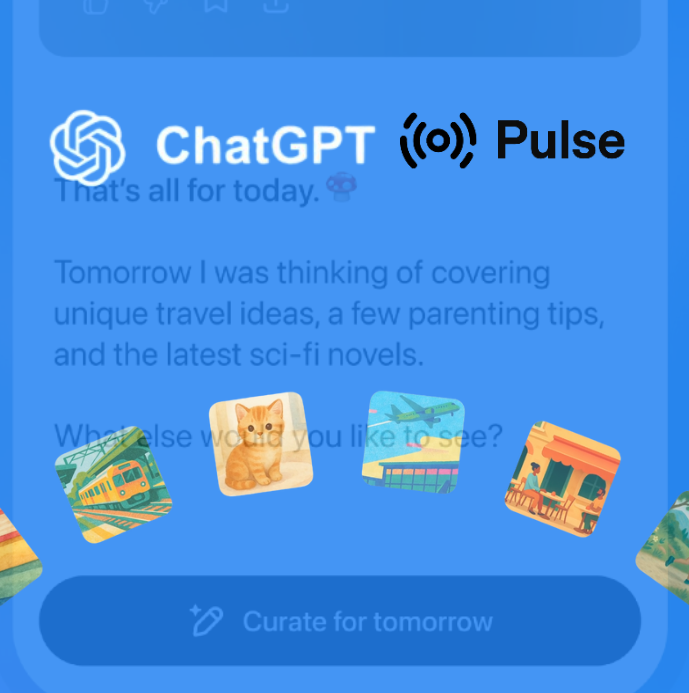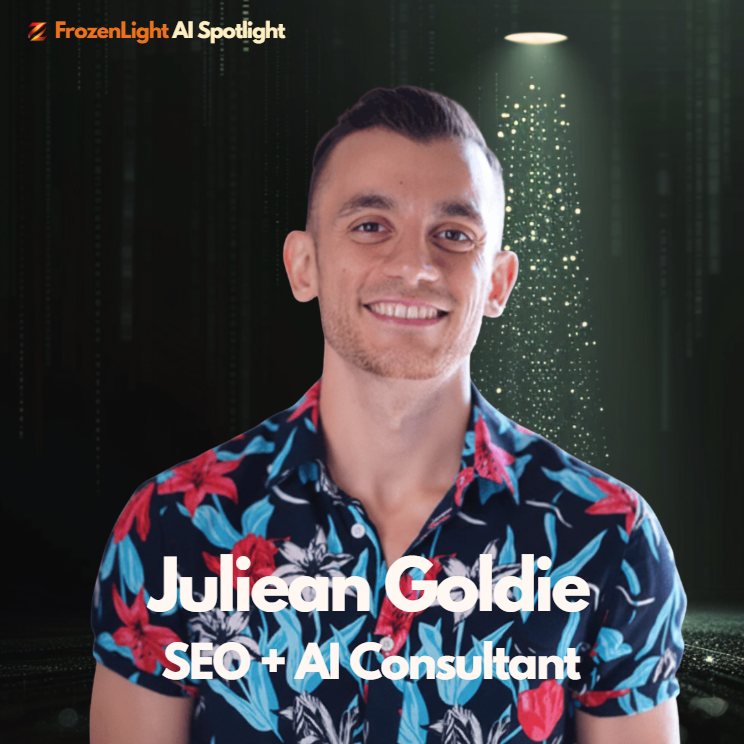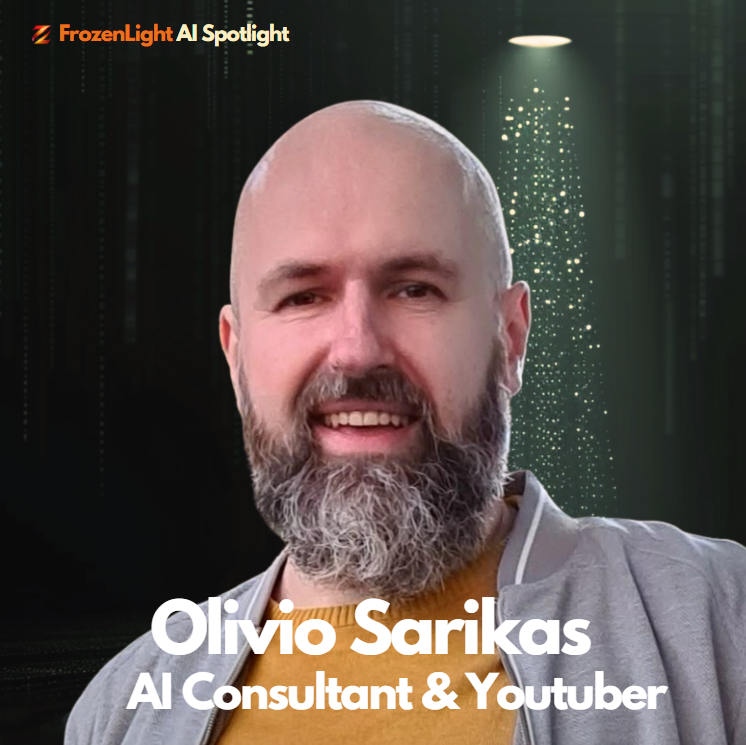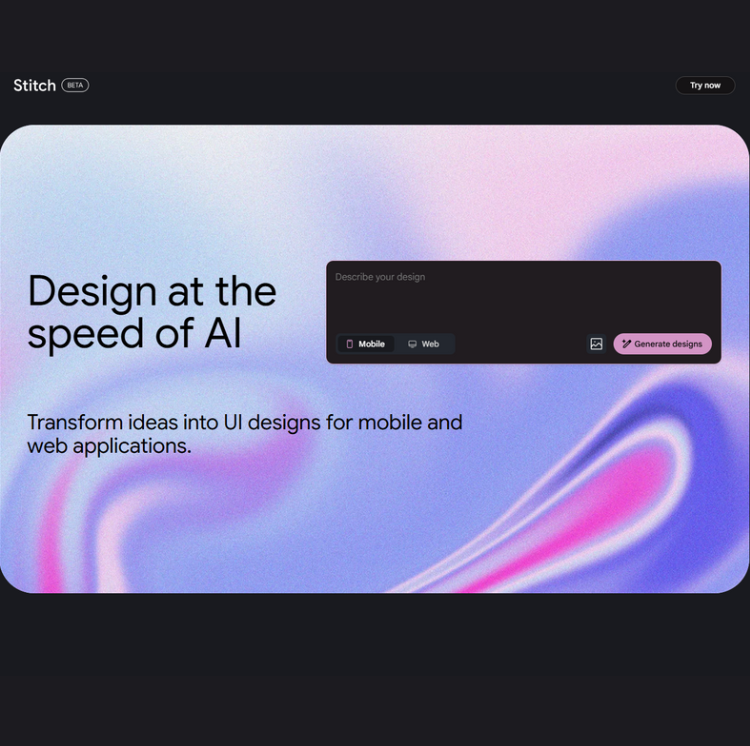
It’s Earth Day 2025.
We’ve made it through another year! 😄
And yes - we should all try to step outside, feel the sun, breathe a little deeper, and reconnect with what’s actually around us.
For us at Frozen Light, it’s a day to combine our two favourite things: Earth and AI.
Ok - let’s make it three. We’ll add people.
If we had to give 2025 a title, it would be this:
Rebalancing our eco-environment to include our top Frozen Light favourite thing in the world - AI.
And yes, you guessed it…
We’re going to focus on the big question everyone’s talking about:
Is AI here to destroy us or save us???
😉
(We hope you got the joke - this is not what we’re all about.)
Nope - we’re going to give you our take.
What’s going on?
How is AI helping us challenge big environmental questions -
but also quietly depending on Earth’s resources to do its job?
So today, we’re taking a moment to pause on this amazing day,
and look at how all of us - AI, Earth, and people -
are coming together in one ongoing moment of balancing.
AI Helping Us Tackle Big Environmental Questions
AI might not plant trees or clean oceans with its own hands - but it’s already playing a role in how we understand, predict, and respond to the biggest environmental challenges of our time.
From analysing climate data to detecting illegal deforestation, from optimising energy systems to predicting natural disasters - AI is stepping in as a tool that can see patterns we might miss, move faster than we can, and offer solutions grounded in real-time data.
It’s being used by scientists, cities, and companies to make smarter, more sustainable decisions - and in some cases, it’s helping us act before it’s too late.
Some of the big AI environmental players in this space?
-
Google’s FloodHub: Helping communities prepare for floods before they happen.
-
IBM’s Green Horizon: Supporting cities in tracking air pollution and forecasting emission patterns.
-
Microsoft: Using AI to model reforestation and monitor environmental risk.
-
Amazon: Reducing packaging waste and optimising delivery routes with AI-driven logistics.
-
Meta: Running some of its models in renewable-powered data centres and researching more efficient infrastructure.
AI for Animals
And when it comes to protecting the non-AI users - no, not humans. We’re talking about animals.
Our fellow Earth members who will probably never prompt a chatbot,
but still need AI to show up for them:
-
Archangel Imaging: AI-powered cameras and satellites spotting poachers in real time.
-
OroraTech: Monitoring millions of hectares to detect threats to wildlife habitats.
-
Conservation AI: Tracking endangered species like pangolins and rhinos with edge AI tools.
-
ZSL’s Instant Detect 2.0: Alerting rangers instantly using AI cameras and satellite signals.
-
ICARUS Initiative: Following migration paths from space to support global conservation.
So while it’s not a superhero, AI is becoming a serious partner -
quietly reshaping how we care for the Earth, one detection, one dataset, and one decision at a time.

What Support AI Needs from Our Earth
AI may live in the cloud - but the cloud lives on Earth.
Every time AI generates text, answers a question, or builds an image,
it relies on physical infrastructure powered by the planet’s resources.
At the centre of it all?
GPUs - high-performance processors doing the heavy lifting behind every prompt.
Here’s what AI needs to keep going:
⚡ Electricity
-
Running a single prompt in a large language model consumes ~0.0025 kWh - like 9 seconds in a microwave.
-
Training a large model like GPT-3 used an estimated 1,287 megawatt-hours - equal to the yearly energy use of 120+ U.S. homes.
💧 Water
-
Cooling all that processing heat takes water - a lot of it.
-
Training GPT-3 used about 700,000 litres - that’s around 300 Teslas’ worth of water.
🌍 Carbon Emissions
-
Training one model = ~284 tons of CO₂, the same as five petrol cars running for their entire lifetime.
So while AI feels digital - it runs on real, tangible resources.
Every model. Every upgrade. Every output.
All of it is grounded in what the Earth gives.
Where We (The people ) Fit In
So we’ve talked about what AI is doing for the planet -
and what it’s taking from the planet.
Now it’s time to talk about us -
the people right in the middle of it all.
We’re the ones making this technology run.
Not physically - but through our decisions, our prompts, our systems, and our habits.
We:
-
Use it for work, ideas, fun, content, planning,
-
Invest in the companies that build it,
-
Choose the tools we bring into our businesses,
-
And signal demand every time we click “generate.”
And the truth is - we don’t always see the impact.
It’s easy to forget the GPU behind the screen.
It’s easy to assume the cost is zero.
But maybe the shift we need isn’t more awareness -
it’s simply remembering our role.
We’re not separate from the system.
We shape how it grows, what it consumes, and what it gives back.
So before we prompt something, we can pause and ask:
-
Do I need this?
-
Is this helpful, or just filling space?
-
Could I use this tool in a way that adds more value - to me, to others, or to the planet?
Because just like with food, travel, and energy -
we’re part of the equation.
And we get to decide what that equation adds up to.
🧊 Frozen Light Perspective
Here’s the part we love the most -
sharing what we really think.
At Frozen Light, AI isn’t just a topic -
it’s our job, our tool, our every day, all-day thing.
And if there’s one message we want to land this Earth Day, it’s this:
AI doesn’t move unless we tell it to.
We ask.
We trigger.
We define its role.
We’re the ones who give it purpose - or turn it into noise.
It’s not here to save the planet.
It’s not here to ruin it either.
It’s here to do whatever we decide it should do.
And that’s the part we can’t forget.
So today, we’re not asking you to panic or unplug.
We’re just asking you to remember your role -
as a user, a builder, a decision-maker, or just a curious human clicking "go."
If we want AI to support the Earth,
then we need to be the ones pointing it in the right direction.
Make that your quiet promise today.
And if you’re thinking this sounds like the part where we all hold hands and sing Kumbaya…
don’t worry. We’re not quite there yet.
Besides - AI doesn’t have hands.
And yes, we’re fully aware. 😉








